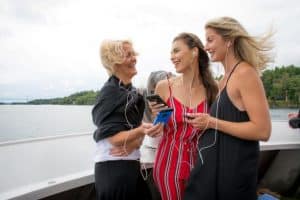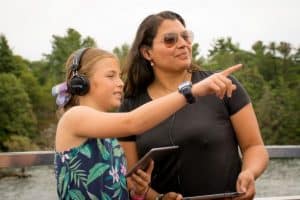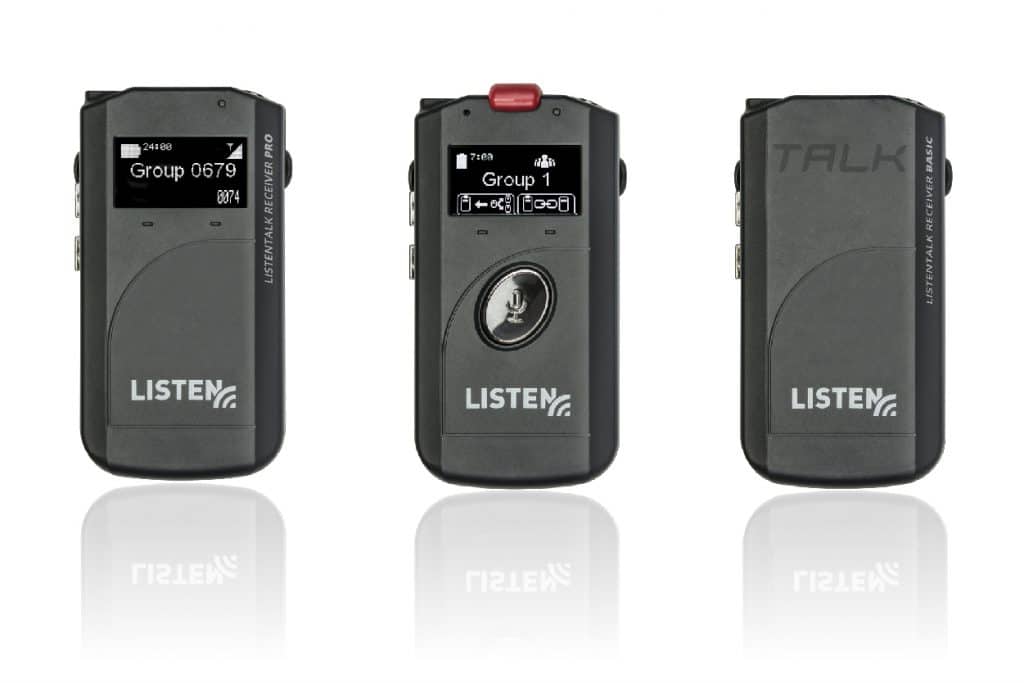- Loading…
“We’ve become a generation of autonomous travelers who plan, book and manage our travel all on that single device, who find trip inspiration using a single photo, and who research destinations using our voices.”
– Digital Mobile Travel Trends 2019 Report
Technology is evolving at a rapid rate, and the impending deployment of 5G networks will only intensify this evolution, especially in the mobile travel space.
Connecting with the “Phonosapien”
Although it’s only been 11 years since the iPhone launched, it’s difficult to envision a trip unaccompanied by smartphones. In fact, 98 percent of travelers now bring their own devices (BYOD) on vacation.
According to the Ofcom Communications Report:
After all, their smartphones are their social connection, camera, wallet, map, mobile check-in, boarding pass, in-flight entertainment and travel agent in one neat, hand-held package.
“Mobile is at the heart of true customer engagement for travel brands, with apps leading the way,” states the 2018 Mobile Travel Trends Report. In 2018, the total number of apps downloaded was 194 billion, up from 178.1 billion in 2017. App downloads are predicted to increase to over 352 billion by 2021. Recent research conducted by Travelport Digital found that 82 percent of travelers were downloading at least the same, if not more, travel apps than the previous year. If you’re not considering utilizing customer devices on your audio tour, you should be.

The Market is Mobile
According to Beta News, the BYOD market is set to reach nearly $367 billion by 2022, up from a mere $30 billion in 2014. The potential benefits of this growth compel tourism businesses to pay attention to travelers who are keen to enjoy the greater flexibility and control that mobile devices provide. There is no doubt that BYOD is here to stay and now is the time for the travel and tourism industry to invest in mobile applications to leverage this economic opportunity.
The growing trend is for customers to use their phones to plan and book trips, make reservations and read reviews. If a customer downloads your app to listen to your tour, you now have an opportunity to engage with that customer throughout the entire travel lifecycle. You’re now positioned to give them a complete and personalized destination guide on their phone, including:
Deep personalization is possible by reaching customers through their own devices – and 80 percent of customers are more likely to buy from a company that offers personalized experiences.
In addition, the possibility to reach end-users, thus becoming influencers, once the tour is over increases through tour apps. Almost 90 percent of companies say the ROI from influencer marketing is comparable to or better than other marketing channels.

Mobile Means Reaching More People
The tourism industry is becoming increasingly aware of the benefits of making travel experiences accessible. Ensuring accessibility isn’t just the ethical choice to make, it’s also a lucrative and sound business decision. The Open Doors Organization estimates that travelers with disabilities spend over $17 billion per year on travel in the United States alone.
One in eight people in the United States, or 30 million Americans, aged twelve or older have hearing loss in both ears. Travel experiences are significantly hindered, at times entirely blocked, when a tourist is unable to hear the tour audio. In addition, tourists are less likely to invest in travel experiences when members of their travel party feel excluded. Listening to people on microphones or over headsets that don’t have the capacity to deliver the sound needed can be frustrating – especially when tour audio must compete with background noise such as transportation and crowds.
For those with Bluetooth hearing aids, the tour audio can be delivered through their iOS or Android devices directly to the hearing aid without having to take out – and potentially lose – expensive devices.
“Honestly, when I am wearing my hearing aids, I feel somewhat like a superhero,” says Kristen Brackett, avid traveler, writer and formerly reluctant hearing aid wearer. She continues, I can “hear better in noisy situations, allowing me to feel more confident in the midst of my travels. Using Bluetooth I can also stream music, podcasts, or talk on the phone without having to worry about taking my hearing aids off to use headphones. Many times, my hearing aids have served me as yet another travel tool to help me feel safer and more prepared.”
With the right technology, hearing impaired travelers can experience a welcoming and seamless sound experience alongside their tour companions. “For the first time, I could hear the tour guide speaking about the rich histories that built the incredible cities I visited. It was thrilling to catch all the details. So thrilling, in fact, that I was the one tourist taking notes because I didn’t want to forget a moment,” says Brackett.

The Future is Digital
“Over the next ten years, travel industry experts predict that the digital travel space worldwide will expand at an annual rate of 3.8% to reach $11.4 trillion.”
Ninety-two percent of travel brands state that a mobile strategy is “critical” or “very important” to the future success of their business. The world is digitally transforming. It took airlines 68 years to obtain 50 million users, television took 22 years, and Twitter two years. The Pokémon Go app earned 50 million downloads in one weekend on Google Play alone. As the tourism industry adapts in the digital economy, the primary challenge for travel brands is to win the attention and loyalty of customers. As the 5G network continues to unfold the rate of change will only accelerate. Travel brands need to assess what technology will facilitate the best customer interactions across the entire travel journey.
What’s Your Next Story? Want more info about how the Bring Your Own Device movement can grow your tour business? Read about Navilution® Wi-Fi, the smart solution for wireless audio tours.

We would love to deliver valuable insights right to your inbox once a month.

We would love to answer your questions, provide you with a detailed quote, or send you more information.
14912 Heritage Crest Way
Bluffdale, Utah
84065-4818 USA
Phone: +1.801.233.8992
Toll-Free: 1.800.330.0891
Office Hours
8:00 am – 5:00 pm MT
Monday – Friday
First, select the calculator type, USA (for Americans with Disabilities Act - ADA), California (for California Building Code), or Australia (for Australia's Disability Discrimination Act 1992). Enter the seating capacity and the number of minimum assistive listening devices required and the minimum number of neck loops will automatically populate based on the calculator type selected.